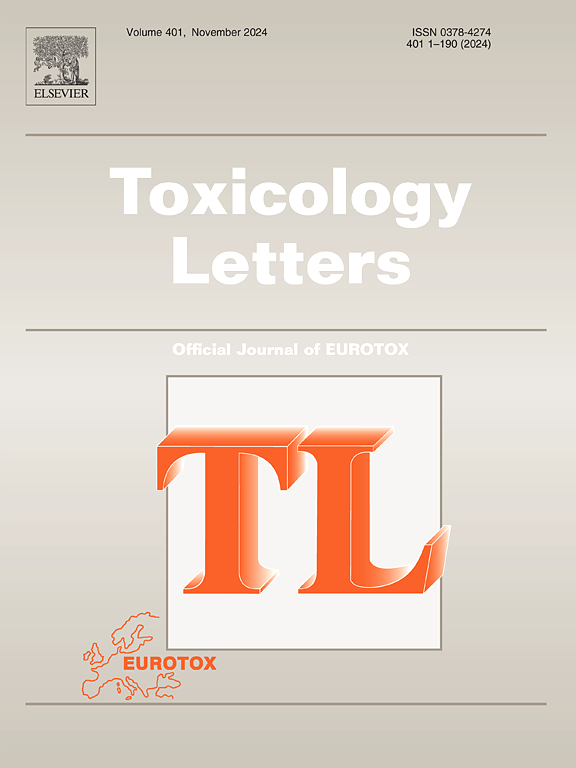玻利瓦尔省学龄儿童接触杀虫剂与认知功能的关系(哥伦比亚)
IF 2.9
3区 医学
Q2 TOXICOLOGY
引用次数: 0
摘要
通过共同努力,解决影响认知功能的社会和环境决定因素之间的相互作用,可以确定指导政府计划实现《2030年议程》的结构性障碍。本研究调查了哥伦比亚玻利瓦尔省Magangue、Achi和Arjona(参考地点)6-12岁学龄儿童的农药暴露和认知功能。共有323名学龄儿童参与了这项研究。采用气相色谱-质谱联用仪(GC-MS)测定血清农药浓度,采用韦氏儿童智力量表(第4版)评估认知功能。使用了一份全面的问卷来收集人口统计信息和暴露概况。在人血清中检出14种有机磷农药和2种氨基甲酸酯类农药。Magangue市农药残留量为91% %,Achi市为34% %。在比较地点,结果显示这些农药在分析的总样品中不到2% %的存在。父母教育程度、农药残留量(LOD)、智商和言语理解指数之间存在交互作用,导致推理能力、问题解决能力、记忆能力和言语理解能力发生变化。父母教育程度、检测到的农药数量、血液中检测到的农药浓度总和除以每种化学物质的报告LD50 (ΣCPN/LD)与感知推理指数得分非常低(表明在抽象、逻辑和分析推理任务中的表现较差)之间存在交互作用。这些发现强调了农药暴露作为一个公共卫生问题的重要性,强调需要进行纵向研究,以确定社会决定因素与神经毒物暴露作为人类发展的预测因素之间的因果关系。研究结果有助于政府制定旨在保护弱势群体和提高对与接触有毒物质有关的风险的认识的公共卫生战略。本文章由计算机程序翻译,如有差异,请以英文原文为准。
Exposure to pesticides and cognitive function in school-age children of the Bolivar department (Colombia)
Joining efforts to address the interactions between social and environmental determinants of cognitive functioning allows the identification of structural barriers that guide government plans towards the fulfillment of the 2030 Agenda. This study examined the pesticide exposure and cognitive function in school-age children between the ages of 6–12 years old from Magangue, Achi, and Arjona (reference site) in the Bolivar Department (Colombia). A total of 323 school-age children participated in the study. A cross-sectional examination was conducted, including the measurement of blood serum pesticide concentrations using a gas chromatography–mass spectrometer (GC–MS) and cognitive function was assessed employing the Wechsler Intelligence Scale for Children, 4th edition. A comprehensive questionnaire was used to collect demographic information and exposure profiles. A total of fourteen organophosphate pesticides and 2 carbamates in human blood serum were detected. In Magangue, pesticides were quantified in 91 % of the participants, and in Achi in 34 %. At the comparison site, the results showed the presence of these pesticides in less than 2 % of the total samples analyzed. Interaction effects were observed between parental education, number of pesticides detected (>LOD), IQ, and verbal comprehension index, which could generate alterations in reasoning, problem solving, memory and verbal comprehension. Interaction effects were observed between parental education, the number of pesticides detected, sum of pesticide concentrations detected in blood divided by the reported LD50 of each chemical (ΣCPN/LD), and very low scores on the perceptual reasoning index, indicating compromised performance in abstract, logical, and analytical reasoning tasks. These findings underscore the magnitude of pesticide exposure as a public health concern, emphasizing the need for longitudinal studies to establish causal relationships between social determinants and neurotoxicant exposure as predictors of human development. The results contribute to governmental public health strategies aimed at protecting vulnerable populations and raising awareness of the risks associated with toxic exposures.
求助全文
通过发布文献求助,成功后即可免费获取论文全文。
去求助
来源期刊

Toxicology letters
医学-毒理学
CiteScore
7.10
自引率
2.90%
发文量
897
审稿时长
33 days
期刊介绍:
An international journal for the rapid publication of novel reports on a range of aspects of toxicology, especially mechanisms of toxicity.
 求助内容:
求助内容: 应助结果提醒方式:
应助结果提醒方式:


